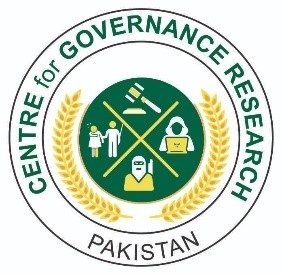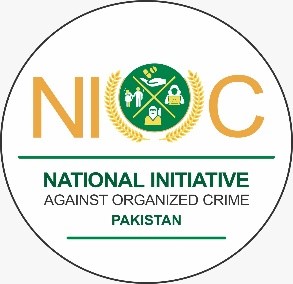National Action Plan Against Migrant Smuggling (NAPAMS)

On behalf of civil society, a group of independent experts, headed by IGP Retd Tariq Parvez, former Director General of the Federal Investigation Agency, have come up with a 14-point National Action Plan Against Migrant Smuggling (NAPAMS) under the National Initiative against Organised Crime (NIOC) launched by the Centre for Governance Research ( CGR). This coincides with the UN Convention against Transnational Organised Crime ( UNTOC) Review that Pakistan is undergoing currently. The Government of Pakistan did well to ratify UNTOC Protocol on Trafficking in Persons (TIP) during 2022. Now it is time to ratify the Protocol on Smuggling of Migrants (SOMs) in order to elicit effective cooperation of the international community.
The National Action Plan Against Migrant Smuggling stands released today.
Tariq Khosa
Director CGR-NIOC
26 June 2023.


National Action Plan Against Migrant Smuggling (NAPAMS)
The death of approximately 300 Pakistanis, on 14 June 2023, off the coast of Greek town Pylos, by drowning, on their way to make it illegally into Italy, is indeed, a national tragedy. This was the third major incident recorded since February 2023, in which migrants from Pakistan lost their lives at sea. These incidents call for concerted, comprehensive, and sustained national efforts against migrant smuggling, which is assuming alarming proportions. Not only that, it is also likely to evolve into a much graver issue, resulting in hundreds of innocent deaths, devastating their families, if not addressed immediately. This plan has been formulated, keeping in view the parameters stated in the UN Protocol against Smuggling of Migrants (2000) and the factors peculiar to the Pakistani context.
Following should be the major suggested parameters of our national response:
- Political ownership. The most important step in combating migrant smuggling from Pakistan, is to have political ownership of the National Action Plan Against Migrant Smuggling (NAPAMS). Without the political ownership, any plan would be a nonstarter, as it requires migrant smuggling specific legislation, provision of adequate resources and ensure greater coordination between different government departments. It can only be accomplished if the government in power owns the national plan against migrant smuggling. NAPAMS should have the approval of the Federal cabinet, if it is to be taken seriously by the stakeholders.
- Threat assessment. Prescribing long and short-term measures to combat the threat of migrant smuggling, has to be preceded by an evidence-based threat assessment. Understanding the dynamics of the phenomenon of migrant smuggling from Pakistan, substantiated by data, is indeed essential to be better able to respond to the threat. While the threat assessment continues, some steps can be carried out in parallel.
- Awareness. Human smugglers take advantage of the lack of awareness of the people about the illegal and risky nature of migrant smuggling. A well thought out awareness campaign, tailored to the respective victim audiences, may be designed and implemented, on a sustained basis.
- Prosecution. In Pakistan, prosecution of networks of migrant smugglers is a weak area in enforcement of anti-migrant smuggling laws. There is a need to carry out a holistic performance audit of the existing law (Prevention of Smuggling of Migrants Act,2018) and enforcement mechanisms against migrant smuggling, including the enforcers (FIA, Coast Guards, FC/Rangers) prosecutors, trial courts, witness protection, rehabilitation of victims etc. Based on this performance audit, necessary changes may be made in the existing laws and criminal justice system to make it more effective in punishing and deterring the human smuggling networks.
- Victim protection. The migrants who get caught should be treated as victims, as visualized in the UNTOC Protocol on Smuggling of Migrants (SOM). They should not be treated as accused and efforts made to rehabilitate them, as laid down in the Prevention of Smuggling of Migrants Act,2018.
- Witness protection. Migrant smuggling is carried out by powerful organized criminal groups (OCGs). Witnesses are reluctant to come forward to give evidence against them before the police and in the courts, for fear of violence. This requires an effective witness protection programme in major migrant smuggling cases.
- Anti money laundering. The migrant smugglers, like the accused of all forms of organized crime, must launder the profits earned by them from this illegal activity. There is a need to carry out financial investigation of all migrant smuggling networks, whenever they are traced out or arrested. This requires strict application of Anti Money Laundering Act 2010, to those involved in migrant smuggling. Also, it requires integrating provisions of AMLA 2010 with those of PSMA 2018.
- Anti-corruption. Migrant smuggling, like all organized crime, is very difficult to carry out without corruption of government employees. All corrupt employees in FIA, Coast Guards etc., found involved in abetment of migrant smuggling must be proceeded against and given exemplary punishments and data maintained of such actions taken. The anti-corruption provisions of law be integrated into the PSMA 2018.
- Socio-economic measures. The primary driver of the victims of migrant smuggling is lack of employment and poverty. Also, prima facie, it seems that the victims of migrant smuggling belong to certain specific areas. For instance, as per one observation, approximately 90% of victims of migrant smuggling going to Europe, via Iran, Turkey route belong to Gujranwala Division and areas of Azad Kashmir. The basic reason for this is that these are the areas from where people have gone abroad earlier, in large numbers. They serve as magnets attracting their families/ friends/ acquaintances to follow suit. Similarly, the poorer victims tend to cross over from Pakistan into Iran via Balochistan and from there sail to Oman, travelling onwards by foot to Dubai. The rates of migrant smugglers for this route are lower than other avenues. Most of these victims belong to parts of KP, Sindh and districts in South Punjab like Dera Ghazi Khan. These areas need to be identified and more targeted socio-economic measures to improve employment opportunities be taken. More vocational training institutes in these areas may be one viable option.
- Legal employment abroad. One view is that since the legal ways of emigration to other countries are difficult, people resort to illegal ways to go to greener pastures. There is a need to evaluate the performance of the Emigration Protection Bureau and the procedures to allow people to go abroad for employment.
- Border control. Migrant smuggling is not possible without crossing borders. Thus, effective border control is an essential component of combating human smuggling. FIA for airports, coast guards for sea routes and FC/ Rangers for land exits. A holistic exercise should be carried out to evaluate their requirements in terms of capacity building and a three-year plan launched to meet these. This step should be accompanied by stepped up monitoring of their performance and ruthless accountability of those involved in migrant smuggling.
- International cooperation. Migrant smuggling is an international organized crime. Unless all the concerned countries i.e., of origin, transit and destination of migrant smugglers, the effort is not likely to succeed. Regional cooperation is required to deal with specific areas of human smuggling in a region. For instance, to deal with human smuggling from Afghanistan/ Pakistan to Europe via land route, it may be desirable to form a regional group of four countries like Pakistan, Iran, Turkey and Greece. In fact, a quadrilateral group to deal with human smuggling comprising, Pakistan, Iran, Turkey and Greece, was set up in 2006. It had one meeting in Athens, followed by one in Islamabad, but withered away after that. It needs to be revived. Similarly, to deal with human smuggling by sea from Pakistan to Oman onwards to Dubai, another four-nation group be formed comprising of Pakistan, Iran, Oman and UAE. Again, to deal with human smuggling by air from Pakistan to other transit countries like Libya and Guinea Bissau, onwards to Italy or Greece by sea, should be dealt with by another regional group. It may be pertinent to point out that in the first decade of the 21st century, smuggling of child camel jockeys from Pakistan to UAE, was a big humanitarian issue. It was successfully combated by the joint efforts of UAE and Pakistan. While in Pakistan, FIA stepped up action against the smugglers who sent these kids abroad; UAE cut down the demand of using these children as camel jockeys, by clamping down against those of its citizens who used these children as jockeys in camel races. The basic aim of these regional groups is to tackle the specific features of each form of migrant smuggling peculiar to these countries.
- Implementation and monitoring. Specific implementation plans should be drawn up on each of the measures above, with unambiguous KPIs and categorical timelines, by a National Steering Committee headed by the Interior Minister. The other members can be from the Ministries of Finance and Law. They can coopt any other members they consider appropriate. Any department not taking it seriously should be brought to the notice of the Prime Minister for necessary action. Below this NSC, should be a joint task force headed by FIA, with Coast Guards, FC Balochistan as members. The Joint Task Force (JTF) shall monitor the implementation of NAPAMS on a monthly basis, through mutually developed data maintenance templates, KPIs and timelines.
- Feedback and review. The plan shall be reviewed after one year of its implementation, in the light of the feedback received from relevant quarters and adjusted accordingly, if need be.
26 June 2023.
